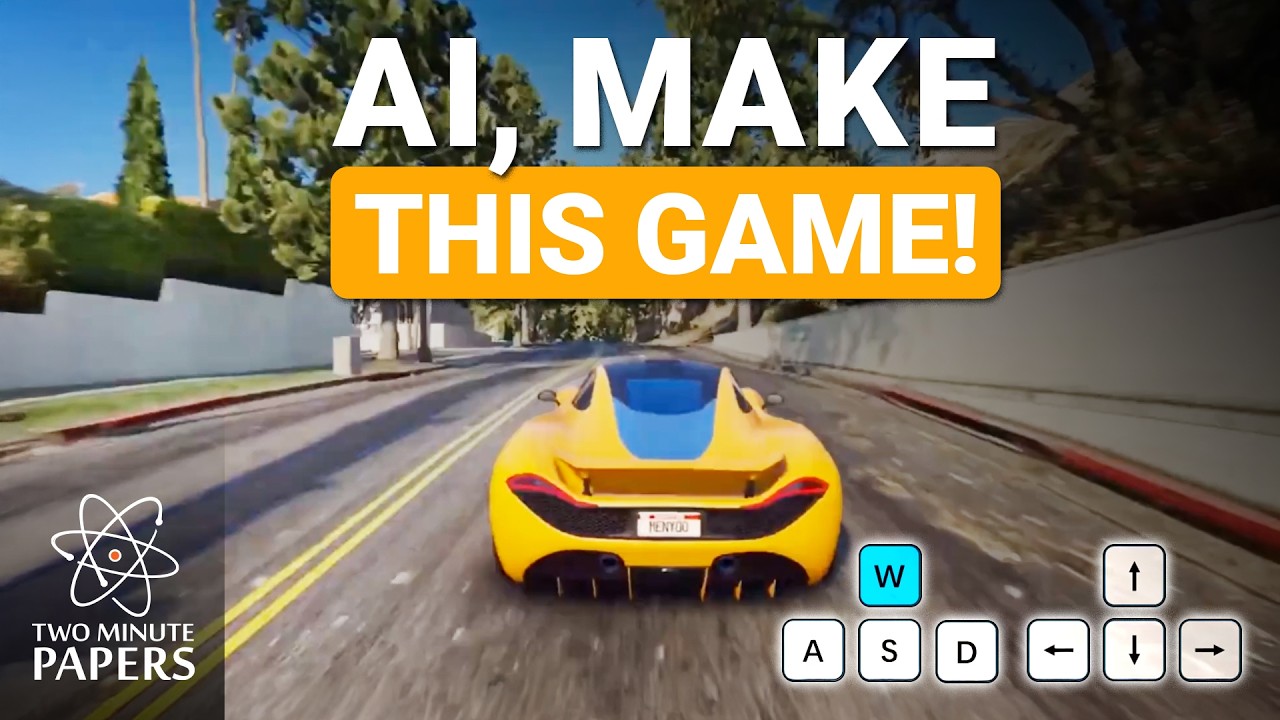Tencent’s GameCraft AI can transform photos into immersive, playable 3D game worlds by generating coherent scenes and handling complex user inputs with impressive accuracy, surpassing earlier AI attempts. This technology not only enables dynamic virtual environments and personal experiences like bringing pets and memories to life but also runs efficiently for real-time use, though interactive character behavior remains a future challenge.
The video discusses the remarkable advancements in AI technology developed by Tencent that can transform photos into playable 3D game worlds. It begins by comparing earlier AI efforts, such as Google DeepMind’s system that could generate simple 2D platformer games from images, but struggled with more complex tasks like creating open-world 3D environments. Early attempts often resulted in glitches and incorrect responses to user inputs, highlighting the challenges faced in this domain.
Tencent’s latest AI, called GameCraft, represents a significant leap forward. Trained on one million gameplay recordings, it can generate coherent and responsive 3D game scenes from photos, handling user inputs like movement commands with impressive accuracy. The video showcases how this AI outperforms previous techniques by smoothly animating characters and objects in various scenes, demonstrating a decade’s worth of progress compressed into just a few months.
One of the most exciting features of GameCraft is its ability to handle complex scenarios such as multi-action inputs, third-person perspectives, and maintaining faithfulness to the original scene. The AI can seamlessly extend the environment beyond the input image without visible seams, creating immersive and believable virtual worlds. This capability opens up new possibilities for interactive experiences that go far beyond static images or simple animations.
An unexpected and heartwarming application of this technology is the ability to bring pets and humans to life within these virtual worlds, allowing users to revisit cherished memories in a dynamic, walkable environment. This adds a deeply personal dimension to the technology, suggesting future uses in entertainment, education, and even emotional connection. The system also runs significantly faster than previous methods, making it more practical for real-time applications.
Despite these impressive achievements, the video notes some limitations, such as the current lack of interactive character behavior, which is essential for a fully engaging gameplay experience. However, given the rapid pace of development and the recent breakthroughs, the presenter is optimistic about what future research will bring. Celebrating ten years of the Two Minute Papers channel, the host expresses gratitude to viewers and encourages engagement to continue sharing cutting-edge AI research in gaming and beyond.
